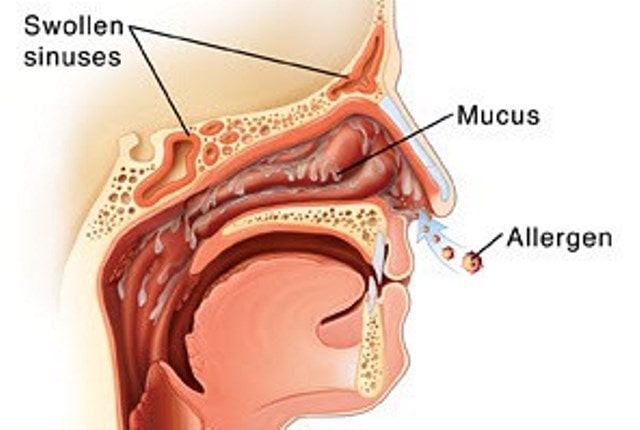What are the symptoms of ovulation? How do you know when you are ovulating? To some, ovulation is obvious with many physical symptoms while to others, they hardly know when they are ovulating. Learn how to tell when you are ovulating, signs and symptoms including pre-ovulation symptoms.
What is Ovulation?
Every month, a number of eggs are released randomly from the ovaries towards the end of a woman’s fertile period. Among these, the ripest of them all is swept off to the fallopian tubes. This is when ovulation is said to have occurred.
Pre-Ovulation Symptoms – Before Symptoms of Ovulation
There are a number of pre-ovulation symptoms that one can use to know when ovulation is about to happen. These include a change in cervical mucus, basal temperature and physical symptoms such as abdominal cramps.
What Are Symptoms of Ovulation
Going straight to the symptoms of ovulation, some of the common ones include the following:
Changes in Cervical Mucus
Observing the state of cervical mucus can be used to predict ovulation and thus this information used to either get pregnant or avoid pregnancy as may be suitable. The accuracy of application for either is said to be 98.5% in matters of conception and this method is therefore quite efficient.
For one to use this method, a sample of cervical mucus is necessary. While the thought of obtaining this may make one cringe, obtaining it is the only way to getting to observe it. Use any of the methods below that you find comfortable. How much mucus you are producing also affects how far you go to get it. The more it is the more it can be obtained externally while with lesser it is the more you need to get more internal.
Ensure that you are in a comfortable position and use any of these:
- Sweep the floor of the cervix by inserting the index and third finger into the vagina.
- Feel for the mucus around the opening of the vagina.
- Wipe around the vagina using tissue paper.
Before using any of the methods, wash your hands thoroughly. This will ensure that no germs are transferred from the hands into the reproductive system and therefore no infections may be caused as a result of this process.
Having obtained the mucus, it is now time to examine it.
- Role a sample of what you get between your thumb and index fingers.
- Press the two fingers together
This should be done as you make observations. Below is what to make out of the results:
- If you find scanty mucus which feels sticky and thick, ovulation is not close.
- Creamy cervical mucus happens to be a good indicator that ovulation is on its way
- Wet, watery and fluid mucus is the first ovulation sign
- Wet mucus that stretches between the fingers and looks like raw egg whites is the most fertile and shows that ovulation is happening. This form is the most fertile stage of a woman and the mucus provides for a favorable environment for conception.
All results should be noted on a fertility chart. Done constantly, a consistent pattern is likely to be observed.
Basal Body Temperature
Basal body temperature is the temperature of someone while at a state of rest. It is therefore the temperature taken in the morning or after one has had at least three hours of sleep. This can be taken using a basal thermometer which can be obtained from a drug store. This comes with a chart for plotting temperature readings. Make copies of this since it will take a number of cycles to deduce a pattern.
- Immediately you wake up but before getting out of bed, take your temperature. Ensure this is done at the same time every day. To ensure you do not get active before taking the temperature, leave the thermometer on the night table where you can get it without moving.
- Do not eat or drink anything before taking the temperature.
- Ensure you have had at least three hours of uninterrupted sleep before taking the temperature.
The hormonal levels of a woman cause the basal body temperature to rise during ovulation. Careful and accurate temperature recording can help track the change. The pattern that evolves can be used to guess when ovulation will occur.
Changes in Cervical Position
The cervix can be felt within the vagina. As ovulation approaches, the cervix gets softer, higher, wet and open. After ovulation occurs, it becomes firm, dry and closes. This can be combined with the cervical mucus method to monitor ovulation. As you check the mucus, feel the state in which the cervix is.
Ovulation Nausea:
This is one of the symptoms of ovulation that is quite common in women. It is caused by the rise in estrogen levels and can last up to two days.
Clomid Ovulation Symptoms
While on this ovulation drug, it is possible to get some false ovulating symptoms. To determine when ovulation is bound to occur, use a clomid ovulation calculator for perfect results. Ovulation tests can also help to predict the ovulation duration.
Ovulation Symptoms Cramps
Pain during ovulation is normal. Some women experience a sharp sudden pain that lasts for a few minutes while others get achy feelings lasting a number of hours. This is experienced on one side depending on which ovary is releasing the egg. This can last up to 48hours.
No ovulation symptoms
At times, there are no ovulation symptoms. This could be caused by things such as certain drugs which suppress a woman’s fertility. The most obvious indicator that ovulation is not occurring is when a person goes for over40days without her periods.
It is also possible for ovulation not to occur even when one is receiving their periods.
When there are no ovulation symptoms, try using an ovulation predictor test. This operates like a pregnancy test kit. If the results are negative, it is important to visit a gynecologist.
Physical Symptoms of Ovulation
If you are looking specifically for the physical symptoms of ovulation, some of the common ones you are bound to experience include but not limited to the following:
Breast tenderness: Just before ovulation, the hormonal changes cause the breasts to be tender.
Ovulation spotting: Some of the women experience slight spotting during ovulation
Lower abdominal pain: during ovulation, it is possible to experience abdominal discomfort mostly noticeable on one side.
Increased body temperature: The hormones produced during ovulation lead to an increase in body temperatures. This leads to hot flashes being experienced by the woman.
Increased libido: During ovulation, the body gets ready for procreation. This leads to a surge in sexual desire for the woman.
If you carefully studied the above symptoms of ovulation, you should be able to know when it is due. Although you might not experience all the above symptoms of ovulation, you will at least experience some.
Suggested Further Reading:
- When Does a Woman Ovulate or When Does Ovulation Occur?
- What Happens During Ovulation & After Ovulation
- Spotting During Ovulation – Before, Around & After Ovulation
- Post Ovulation Symptoms & How Do You Know When You Are Ovulating
- Ovulation Pain – Signs & Symptoms, Severe, Lower Pain Back
- Pain during Ovulation – Before, During, After, Breast & Back Pain
- Cramping After Ovulation – Is it a Normal or A Pregnancy Signs?
- Ovulation after Miscarriage – When, After How Long, Signs
- Ovulation Test – Positive, How to Use Test, When to Take


